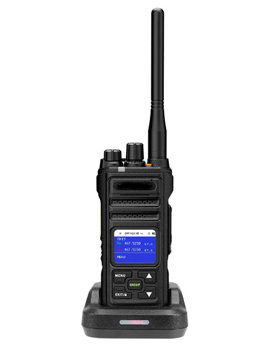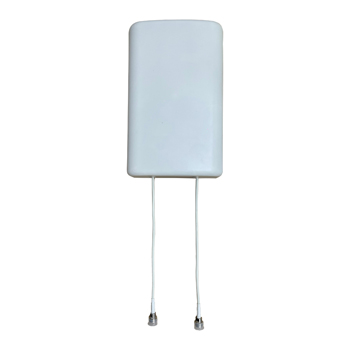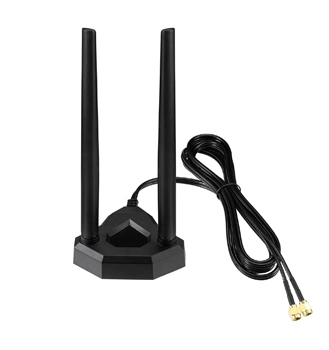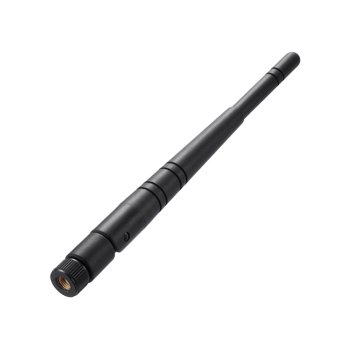
The monopole antenna is a significant milestone in the field of wireless communication. It’s one of those parts you may not consider frequently, but it’s there in everything, from the cell phone in your pocket to the radio in your car. In this article, we will explore the world of monopole antennas, highlighting how they’ve adapted to become a necessary component of everyday life.
At first, understanding the fundamentals of monopole antenna operation may seem difficult, but we’re here to make it easy. Efficiency and simplicity are key features of these antennas, which provide an affordable option for a variety of uses.
This article provides a comprehensive review of monopole antennas, their historical origins, antenna types, structure and design elements, and the important function they play in modern communication networks. Along with discussing the benefits, drawbacks, and particular uses of monopole antennas. Let’s study how these devices capture and send signals, enabling us to stay connected in more ways than we may think.
Table of Contents
ToggleHistory of Monopole Antenna
The monopole antenna, initially conceptualized in the late 19th century, has its origins in the pioneering research of Guglielmo Marconi, who used early versions of monopole concepts for his groundbreaking wireless telegraphy studies. For more than a century, monopole antennas have been essential in the wireless communication industry. Based on the basic research of electromagnetic radiation, they set off on their adventure in the early 1900s. These antennas revolutionized the way we capture and transmit signals because of their efficiency and simplicity, which led to their popularity in a variety of applications.
At first, monopole antennas played a key role in the early stages of radio communication development. A simple method for transmitting and receiving audio over long distances was offered by it. The use of monopole antennas expanded along with technological advancements. They were the preferred option for new wireless technologies due to their affordability and versatility.
Monopole antennas have changed over time to meet the needs of a world that is becoming more interconnected. They are still an essential part of wireless technology today, allowing for accurate data transmission and international communication. Their development reflects wireless technology’s breakthroughs, demonstrating their continued applicability in the digital era.
What is a Monopole Antenna?
A single conducting element, typically a wire or rod, positioned above a conductive ground plane makes up a monopole antenna, which is a form of radio antenna. This antenna is a straightforward single-wire device that is widely used in wireless communication systems for both sending and receiving signals. Because its length is usually designed to resonate at a certain wavelength of the broadcast or received signal, it is categorized as a resonant antenna.
The conductor rod in a monopole antenna oscillates by standing voltage and current waves along its length, functioning primarily as an open resonator for radio waves. Depending on the desired radio wave wavelength, the antenna’s length can be easily calculated. The monopole antenna has an average gain of 3.7 dBi and operates in the frequency range of 1.7-2 GHz.
Structure and Design Features
Due to its unique properties, monopole antennas are extremely useful for a wide range of applications, especially in global positioning systems where precise signal reception is essential.
Radiating Element: This is the main element for sending and receiving electromagnetic waves, and it is usually a vertical rod or wire. The fundamental component of a monopole antenna is a single conducting device, known as a monopole, that is positioned above a ground plane. This concept provides a vertically polarized wave and is simple yet very effective. Monopole antennas’ omnidirectional pattern in the horizontal plane is a crucial component that guarantees consistent reception and transmitting capabilities independent of the antenna’s orientation with respect to the satellite signals.
Ground Plane: A network of wires or conductive surface that improves the radiating element’s performance by serving as a reflected surface. Because of the way they are made, monopole antennas need a large ground plane in order to work well. To ensure that there is sufficient surface area to effectively counteract the monopole element, this need frequently affects the device’s entire design.
Design features: This includes adding loading coils to minimize the physical size without affecting performance, changing the height, and tapering for impedance matching. The antenna’s performance is greatly influenced by the monopole’s length, which is usually expressed as a quarter of the frequency’s wavelength. This measurement is calculated to provide optimal resonance and the greatest possible reception of wireless signals.
Types of Monopole Antennas
Monopole antennas come in several types, each catering to specific applications:
Magnetic Whip Antenna
One kind of monopole antenna is a whip antenna, which is extremely flexible to prevent easy cracking. This antenna’s name was inspired by the whip-like motion it displays when it is disturbed. The bottom of this antenna is simply attached to the radio transmitter or receiver, and it consists of a straight, flexible rod or wire.
These antennas are commonly made using a set of interlocking telescoping metal tubes for portable radios, which allows them to be folded back when not in use. Longer whips, which can reach lengths of 11 meters, are primarily made to be mounted on automobiles and other structures that include a flexible fiberglass rod with a wire core. The wavelength of the radio waves can be used to calculate the ideal length of this antenna.
These are the monopole antennas that are most commonly used in the VHF, UHF, and HF radio bands. These are widely used for boom boxes, walkie-talkies, Wi-Fi-enabled devices, FM radios, cordless phones, and handheld radios. Both 2-way radios for cars and airplanes and car radios are connected to it.
Ground Plane Monopoles
Half of a dipole antenna is positioned at a right angle on top of a conducting ground plane to create a ground plane monopole antenna. It does not transmit signals below the ground plane, although it works similarly to a dipole antenna placed above one. These antennas’ effective radiation characteristics and ease of usage make them popular in internet networks and mobile communications. Ground plane monopole antennas are also single-ended, which makes them very useful for connecting to transceivers that are single-ended.
Quarter-Wave Monopoles
When an infinite ground plane is substituted for one half of a half-wave dipole antenna, the other half of the dipole “mirrors” itself in the ground plane. The counterpoise is another name for this ground plane. This is known as the Quarter wave monopole.
The monopole acts as a “half-wave” dipole in all practical senses. In other words, the radiation resistance is half of the half-wave dipole, and it has the same doughnut-shaped radiation pattern. The same loading and feeding methods can be used, and it can be folded or bent like a dipole.
Helical Monopoles
A helical antenna is made up of at least one conducting wire twisted in a helix shape. Antennas that are created with at least two or four wires in a helix are referred to as quadrifilar or bifilar, whereas those that are designed with just one helical wire are known as monofilar. Helical components are used to accomplish broadband functionality.
Folded Monopoles
This type of monopole mast radiator antenna is mostly utilized by AM radio broadcasting stations as a transmitting antenna in the medium wave spectrum. This antenna’s grounding system, which consists of underground wires, is primarily attached to a mast or vertical metal rod. Simply said, the mast is enclosed by vertical wires that are electrically connected at the top. A metal ring near the base of the mast simply connects these wires, and the transmitter’s feed line electricity is connected between the ring and the ground. When an AM radio station shares a tower with other antennas, such as FM broadcasting antennas, this is the ideal option.
Shortened Monopoles with Loading Coils
When space constraints prevent the use of a full-length antenna, especially at lower frequencies, a “shortened monopole with a loading coil” is a vertical antenna (monopole) that is physically shorter than a typical quarter-wavelength design. However, by adding an inductor (loading coil) in series at its base, the antenna is made to resonate at the desired frequency, effectively “lengthening” it electrically and enabling it to operate at a shorter physical length. This is designed to preserve resonance while conserving space.
Impedance Matching
The antenna effectively transfers energy between the radiating device and the transmission line through impedance matching. Impedance matching for monopole antennas usually involves modifying the radiating element’s length or adding elements like tuning stubs, baluns, or matching networks. For the antenna to function as efficiently as possible in the intended frequency band, it must be made with matching impedance for the end user environment. Maximum range, low power consumption, less heating, and dependable data flow are the outcomes of optimal efficiency. To guarantee that the maximum power is delivered from the RF circuity to the antenna with the least amount being reflected back, the antenna’s input impedance must be set to 50 Ω.
Does Monopole Antenna Need a Ground Plane?
No, in monopole antennas that operate at frequencies lower than 20 MHz, the ground plane is typically the Earth; in this instance, the antenna is a vertical mast that is placed on the ground and is electrically isolated from the ground by an insulator. The feedline is connected to an Earth ground at the antenna base on one side and to the mast on the other. A radial network of buried wires extending outward from a termination close to the antenna base is frequently used in transmitting antennas to lower ground resistance. For radio broadcasting in the MF and LF bands, this design is utilized for mast radiator transmitting antennas. The T-antenna and umbrella antenna are examples of capacitively top-loaded monopoles that are utilized to boost efficiency and radiated power because the antenna mast is electrically short at lower frequencies, resulting in low radiation resistance.
Artificial ground planes are used to enable the antenna to be installed above ground because the size of the ground plane required is smaller at VHF and UHF frequencies. A quarter-wave whip antenna with a ground plane made up of three or four quarter-wave long wires or rods that radiate horizontally or diagonally from its base connected to the ground side of the feedline. This is a common type of monopole antenna example at these frequencies for mounting on masts or structures. The metal surface of an airplane body or car roof makes an excellent ground plane at gigahertz frequencies. Car cell phone antennas are made of short whips mounted on the roof, and aircraft communication antennas are often made of a short conductor in an aerodynamic fairing that extends from the fuselage. This is known as a blade antenna.
Monopole antennas also include the rubber-ducky and quarter-wave whip antennas used with portable FM radios and walkie-talkies. The ground side of the transmitter in these portable devices is simply connected to the ground connection on its circuit board; the antenna lacks an effective ground plane. The antenna and ground combination may operate more like an asymmetrical dipole antenna than a monopole since the circuit board ground is frequently smaller than the antenna. A simple ground plane might be the hand and body of the person holding them.
Monopole Antenna Radiation Pattern
In order to clearly identify the antenna’s function and directivity, the radiation pattern is a representation of the wavefront emission or reception of the antenna that specifies its strength. Both the distant and near-field regions are impacted when the antenna emits power. From any antenna, the radiation pattern can be graphically represented as a function of radial distance and angular location.
Because of its omnidirectional radiation pattern, the monopole antenna emits electricity in all directions that are vertical to it. By dropping-off radiation to zero at the antenna’s axis peak, the radiated power of the antenna varies with elevation angle. It emits polarized radio waves vertically.
The radiated power density at a given elevation is directly proportional to the line’s radial distance from the source at any elevation angle. Within a power density that is comparable to a quarter wave monopole and decibels-isotropic, the radial axis is modified.
What is the Purpose of a Monopole Antenna? (Applications)
Monopole antennas are used in a variety of contexts, including handheld devices and systems mounted on vehicles. They are a desirable option for manufacturers that want to add quality wireless communication devices without significantly expanding their size or changing their appearance due to their versatility and reasonably low production costs.
Applications-wise, monopole antennas’ consistent and dependable performance benefits customers ranging from navigation service providers to people who use smartphone services. Their fundamental simplicity does not lessen their power; rather, it emphasizes the elegance of a well-designed system that consistently and efficiently provides accurate transmission.
- A variety of industries, including space science, radar technology, biomedical research, etc., use monopole antennas.
- The monopole is commonly used as a resonant antenna, with its rod acting as an open resonator, especially for radio waves, and fluctuating through standing waves of voltage and current along its length. Therefore, the selected radio wave wavelength is the only factor that determines the antenna lengths.
- Wireless communication systems make great use of this kind of antenna.
- For wearable applications, a low-profile pentagonal monopole antenna is built and utilized.
- This antenna is widely utilized in portable AM/FM radios, cars, etc.
- Dual-band, multi-band, and UWB (ultra-wideband) applications all use monopole antennas, which are incredibly effective, inexpensive, and low profile.
Monopole Antenna vs. Dipole Antenna
While both monopole and dipole antennas are resonant types, they differ in design and application:
- A monopole antenna uses just one pole or conductive element and is made up of a straight conducting rod that is positioned vertically on a real ground plane. A dipole antenna, on the other hand, transmits or receives radio frequency energy by use of two poles or conductive parts that are separated at the center.
- The dipole antenna employs a synthetic ground plane made by its symmetric radiator elements, whereas the monopole antenna depends on a ground plane, with the external conductor of a coaxial cable acting as the ground reference.
- The omnidirectional radiating pattern of a monopole antenna offers consistent horizontal plane coverage. On the other hand, the radiator elements of the dipole antenna, which are 180° out of phase with the inner and outside conductors of the coaxial cable, provide a radiation pattern that is vertically symmetric.
- While monopole antennas are available in a limited number of forms and varieties, dipoles are widely used and exist in a wide variety.
Advantages and Disadvantages
Advantages
Monopole antennas are the preferred option for many wireless communication applications because they provide a number of significant benefits over alternative antenna types. They stand out due to their ease of use, affordability, and efficacy in transmitting and receiving signals, which guarantees that they are essential to the operation of a wide variety of devices.
- Compact size and design – They are well known for their simple design. This ease of use makes it simpler to incorporate into gadgets like wearable technology, smartphones, and car navigation systems. In contrast to more complex antenna types, monopoles can operate efficiently without the need for large areas or complex structures. Because of their small size, manufacturers are able to maintain devices’ portability and sleekness without sacrificing signal quality.
- High signal quality – In urban settings, where multi-path interference may seriously affect signal quality, monopole antennas are quite effective. Because of their natural ability to reduce noise and sustain a strong signal, they provide dependable connectivity for users navigating difficult urban environments.
- Cost-effective – Unlike more complicated antennas, their straightforward design eliminates the need for costly materials and time-consuming manufacturing procedures. Because of its cost effectiveness, monopole antennas are a desirable choice for producers aiming to create high-quality, reasonably priced wireless communication devices.
- High Performance – Because of their advantageous radiation patterns and bandwidth capabilities, monopole antennas perform noticeably better. They can efficiently send and receive signals from satellites with negligible loss, guaranteeing reliable and precise geographical data.
- Efficient transmission – A monopole antenna’s reactive impedance is comparatively high throughout most of its frequency range. You can change the impedance without sacrificing sensitivity by placing an active amplifier with a high input impedance.
Disadvantages
- Poor radiation – When a monopole antenna radiates equally in all directions along the horizontal plane, it means the energy is distributed uniformly. Therefore, the signal strength in any one direction is not very strong, even though this omnidirectional feature is useful for applications needing wide coverage.
- Interference – Nearby metal objects and the ground can cause signal reflections, which interfere with the primary signal path. These reflections could result in the reception or transmission of signals in unexpected polarizations (both vertical and horizontal), potentially degrading signal quality and causing multipath interference.
- Need of a Ground Plane – Monopole antennas require a ground plane that is usually proportional to the operating wavelength. This can lead to big, bulky ground planes for lower frequencies, which makes them challenging to deploy in environments with limited space or on small devices.
- Calibration errors – It can be challenging to calibrate monopole antennas inside shielded chambers because their impedances can differ by orders of magnitude. Measurements taken too near the ground plane or antenna tip are likely to be inaccurate.
Applications in Communication Systems
To ensure reliable connectivity in the wireless communication network, monopole antennas are essential. For reliable communication links, these antennas are essential because they can receive and send signals in a 360-degree horizontal pattern. In urban settings, where obstacles may potentially prevent signal flow, this feature is especially helpful.
- Monopole antennas are now a crucial part of the development and operation of GNSS/GPS systems because of their simple design and affordability. By recognizing their essential function in wireless communication, we can leverage the potential for further advancements in geolocation services, increasing their dependability and accessibility for users worldwide.
- These are also used to broadcast over-the-air television signals due to their ease of operation and efficient emission patterns. These antennas guarantee dependable signal transmission to homes and businesses, especially in areas lacking satellite or cable connectivity.
- Since monopole antennas can transmit signals uniformly in all horizontal directions, they are frequently employed in AM/FM transmission towers. Radio broadcasts may effectively reach large audiences in both urban and rural locations due to their omnidirectional coverage.
Conclusion
In conclusion, due to its ease of use, effectiveness, and versatility, monopole antennas continue to be a fundamental component of communication technology. Their extensive range of uses, from broadcasting to contemporary wireless networks, and historical relevance highlight their significance in the development of technology. Their benefits make them invaluable in the rapidly growing field of communication. From this article, users can understand what a Monopole antenna is and its design characteristics while comparing the pros and cons and applications to make your technology solutions even better.







